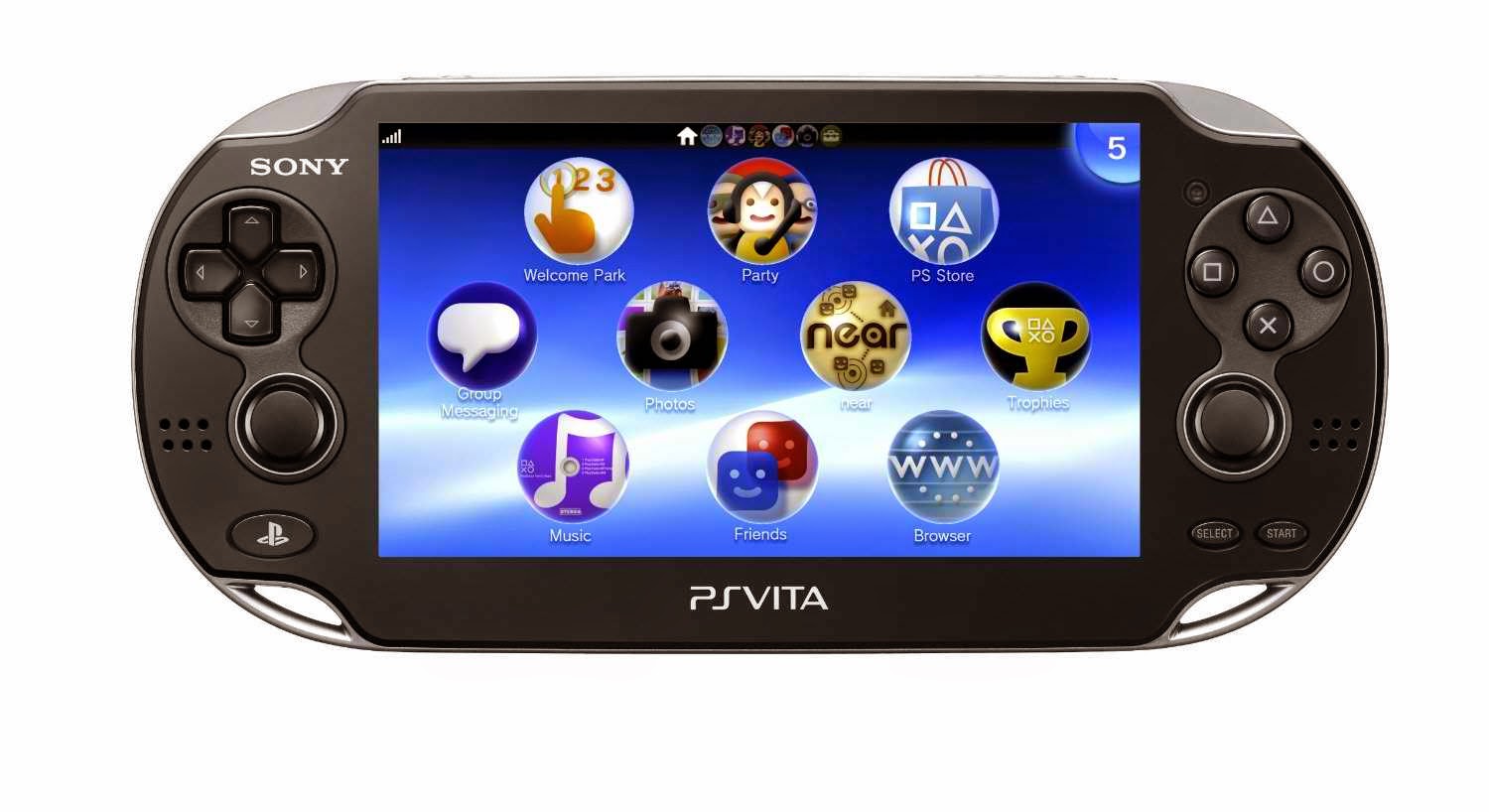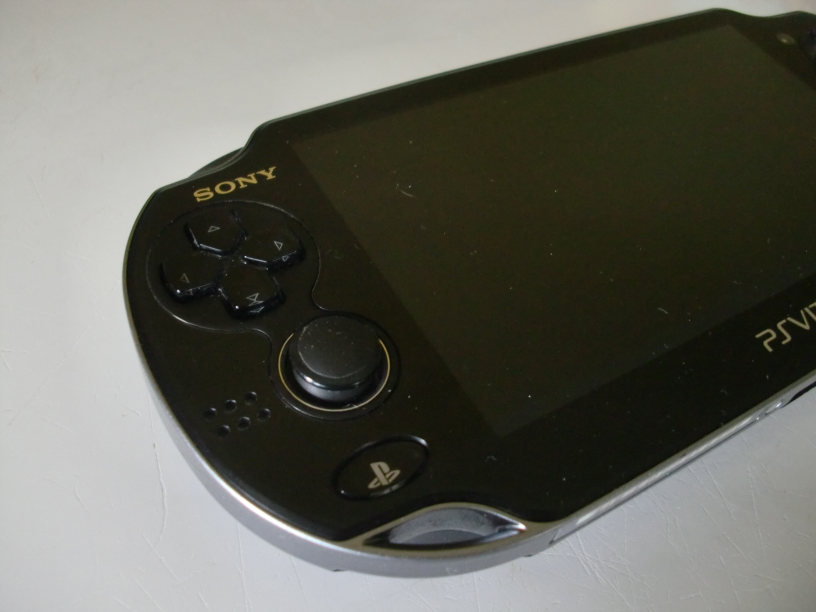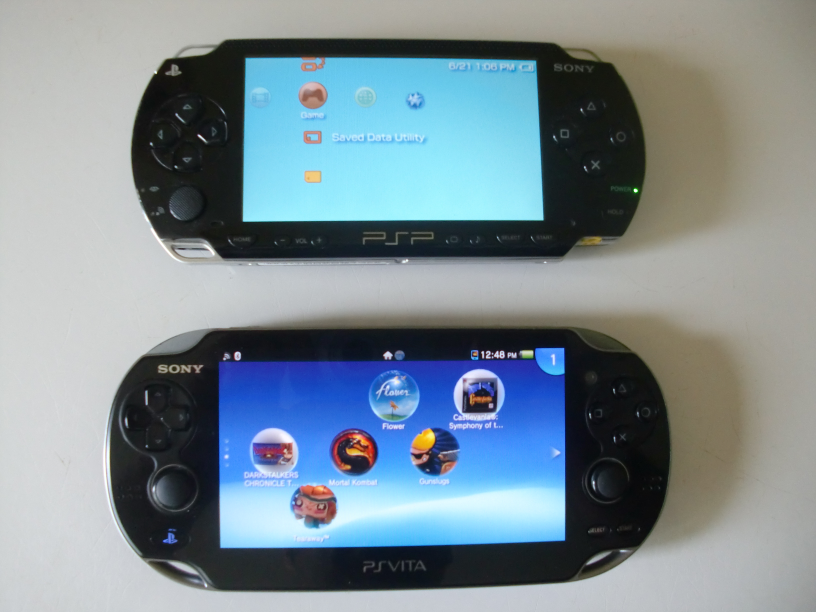Now the Playstation Vita, on the other hand...
As frequent readers already know, I bought a Vita at a pawn shop for $75 nearly a month ago, and intended to review a handful of its games in a future journal entry. However, actually finding the games has been a challenge. Here's what turned up at the nearest Walmart...
Notice anything missing from this display case? I sure did. I asked a clerk what was up, and he informed me that the store's supply of Vita games were going back to the manufacturer, and that the "Vita didn't do as well as Sony had hoped." (Heh, no kidding!) He was kind enough to let me look through the shopping cart where the Vita games had been dumped, but they were a depressing assortment of overpriced launch titles. Street Fighter X Tekken for forty dollars? No sale.
The story was the same at a K-Mart a few blocks away, and things weren't much more encouraging at Meijer, a superstore exclusive to the midwest. There were five games and a handful of accessories squeezed into the end of the gaming aisle's Playstation section.
I thought this vanishing act might have been limited to a single town, but a recent installment of Giant Bomb's Bombcast stated that it's happened in stores throughout the United States, calling the Vita's continued survival into question. Some have speculated that Sony is shifting to an all-digital distribution strategy, but it's not a move that worked out too well for its predecessor, the bite-sized and largely unloved PSP Go.
The smart money's on a short shelf life for the (overly) ambitious handheld, which seems to be confirmed in a recent interview with Shuhei Yoshida, the president of Sony Computer Entertainment's worldwide operations. When asked by Polygon's Brian Crecente if Sony would limit production of first-party games for the Vita, he offered this blunt response:
"I would say, yes, that's correct."
Wait, it gets worse! (And not just because the article was written by Brian Crecente.) When asked about the Vita's worsening fortunes, Yoshida had this reply:
"When we launched PSP titles, a big talking point was PS2-quality games in your hands. It was an amazing experience to play PS2-quality like Twisted Metal on your portable device. But as time went on and the PS3 launched and people started to see next-gen games, that PS2 quality was not enough. People's expectations for the quality just moved on."
Words don't even do this comment justice; I'll need to respond with a crappy drawing.
And he's not even done yet!
"So when we launched the Vita with Uncharted, it was amazing; PS3-like quality in your palm, but as time moved on, you are seeing PS4 quality and people's expectations for the graphic fidelity has gone up."
 |
| Insulting gamers put Sega where it is today. On the floor of Moe's Tavern, sucking coins from the Love Tester machine. (image courtesy of btretroarcade) |
I'm sure you're smart enough to recognize the train wreck of logical fallacies in this statement, but let me just go over them anyway. First, it's well established that the race has never gone to the strong in a competition between leading handhelds. The GameBoy- that old white brick with the blurry, puke-green display and software that was rarely on par with the NES- blew away all of its competitors in sales, including portable powerhouses like the Atari Lynx and the TurboExpress. That trend continued for twenty-five years, with the wimpy GameBoy Color muscling the Neo-Geo Pocket off store shelves and the GameBoy Advance burying any handhelds foolish enough to challenge it. The PSP is the only system that came close to challenging Nintendo's dominance, and the Nintendo DS (with its lack of multimedia features and a graphics processor that might be able to compete with the Nintendo 64 on a good day) sold nearly twice as many units.
 |
| NOW you're playing with power! (Image courtesy of Cray.com. I know, I'm surprised they're still in business, too!) |
The problem with the Vita isn't a lack of power. Oh no, it's quite the opposite. Sony stubbornly boosted the technology (and price!) of its latest uber-handheld to obscene levels, ignoring a quarter century of gaming history and their own failure with the PSP. How did they EXPECT this to turn out? They could have put a herd of Cray super computers in the Vita and it wouldn't have made a damn bit of difference. The 3DS is cheaper than the Vita; smartphones and tablets are far more versatile.
Here's my second issue with Yoshida's comments. He seems to suggest that Sony's two handhelds were only relevant for as long as they could achieve parity with their console counterparts. (Let's just forget for a second that Sony's claims of a "console-quality" handheld experience are gross exaggerations. The Vita is at best a Playstation 2.67, and the well-received but visually lacking port of Mortal Kombat proves as much.) Let's examine that more closely. The PSP was released at the tail end of 2004 in Japan, with a US launch in March of the following year. The PS3 hit stores in both territories in November 2006. That makes the effective lifespan of the PSP roughly two years. It's even worse for the Vita, which hit stores in late 2012, with Sony's latest home console released one year later. If Yoshida is seriously making the claim that Sony's handhelds are obsoleted by its consoles (ignoring the clear distinction between the two), that's some Stolar-grade cutting and running right there.
Here's my second issue with Yoshida's comments. He seems to suggest that Sony's two handhelds were only relevant for as long as they could achieve parity with their console counterparts. (Let's just forget for a second that Sony's claims of a "console-quality" handheld experience are gross exaggerations. The Vita is at best a Playstation 2.67, and the well-received but visually lacking port of Mortal Kombat proves as much.) Let's examine that more closely. The PSP was released at the tail end of 2004 in Japan, with a US launch in March of the following year. The PS3 hit stores in both territories in November 2006. That makes the effective lifespan of the PSP roughly two years. It's even worse for the Vita, which hit stores in late 2012, with Sony's latest home console released one year later. If Yoshida is seriously making the claim that Sony's handhelds are obsoleted by its consoles (ignoring the clear distinction between the two), that's some Stolar-grade cutting and running right there.
 |
| Even this guy couldn't shovel all of Shuhei Yoshida's BS. (image courtesy of NintendoLife) |
Yoshida later claims in the interview that the Vita can subsist mostly on indie games, but that's as realistic as hoping to scrape by with digital distribution (read: not very). Indie games are fine, but they're rarely exclusive to one game system, often appearing on home computers as well. Retro City Rampage has appeared on nearly every modern format, and current critical darling Shovel Knight is available for PCs, the struggling Wii U, and the portable game system Sony doesn't manufacture.
Let's face facts here... first-party releases are important to a game system. Without them, the Wii wouldn't have been successful, and the Wii U wouldn't have held on long enough to find its second wind. Counting on indie games to save your butt is a long shot bet, and one that's not likely to pay off in the future. Shuhei Yoshida already knows this, though. He's just giving owners of the Vita some false assurance until Sony thinks it's safe to make it disappear for good.
(Special thanks to Talking Time for helping spark this rant.)




















_00008.png)
_00005.png)